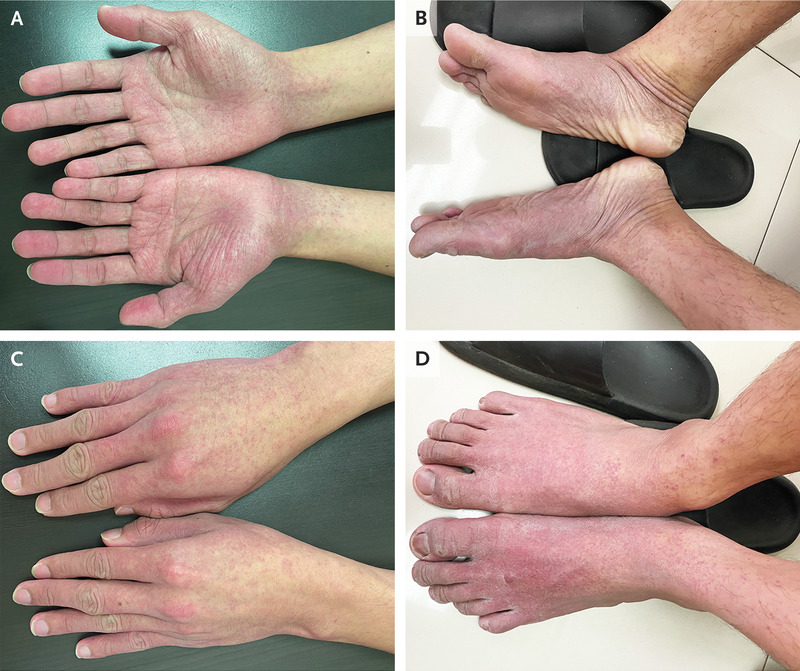Parvovirus B19-Related Dermatological Manifestation: Beyond “Slapped Cheek”

A recent clinical observation documents a unique case of papular–purpuric “gloves and socks” syndrome in a 26-year-old man, presenting an atypical dermatological manifestation of Parvovirus B19 infection. Typically associated with the “slapped cheek” facial rash, this case highlights the virus’s capability to cause varied skin presentations, emphasizing the need for physicians to recognize these less common symptoms for accurate diagnosis and reassurance of patients regarding the self-limiting nature of this infection.
Key Points:
- Patient Profile: A 26-year-old man with a 1-week history of an asymptomatic rash on hands and feet, also experienced a resolved fever.
- Physical Symptoms: Examination revealed partially blanchable macules around wrists and ankles, merging into erythematous patches on both ventral and dorsal surfaces of hands and feet.
- Diagnosis Method: Positive serum B19 IgM antibody test and polymerase-chain-reaction assay confirmed parvovirus B19 infection.
- Papular–Purpuric “Gloves and Socks” Syndrome Diagnosis: Characterized by its distinct acral rash, diverging from the classic “slapped cheek” pattern of Parvovirus B19.
- Symptom Distribution: Unlike typical Parvovirus presentations, no skin changes were observed on the patient’s cheeks or other body parts.
- Common Manifestation in Age Group: The syndrome is most prevalent in adolescents and adults, showcasing varied rash distributions.
- Lesion Characteristics: Skin lesions in this syndrome can be petechial or macular in nature, adding to diagnostic complexity.
- Prognosis and Recovery: The patient was informed about the self-limited nature of the viral infection and the rash subsided within a week.

Parvovirus B19 causes fifth disease (erythema infectiosum). Fifth disease got its name because it was the fifth viral skin rash known to affect children in a list of six conditions.
More in Dermatology
